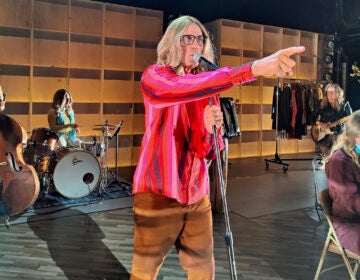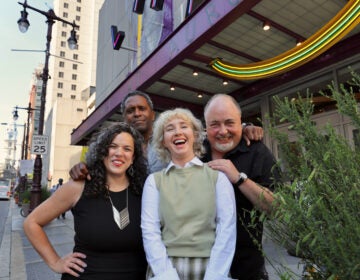Wilma Theater adapts for COVID performances with ideas from the past
To maintain social distancing for theater performances, the Philadelphia company is taking cues from Shakespeare’s original Globe Theatre.
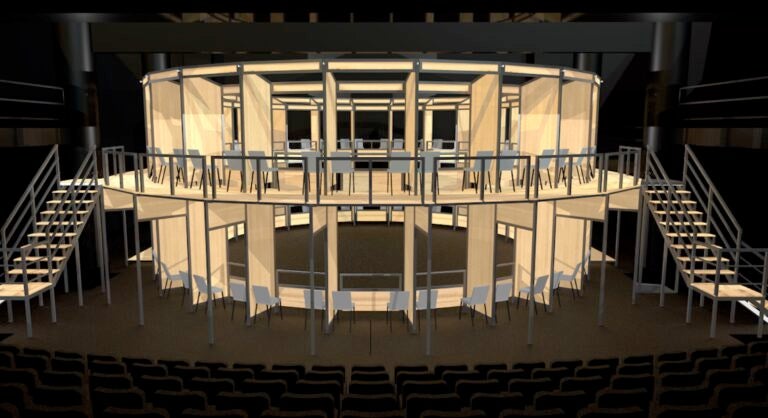
A rendering shows original seating design by Sara Brown, Misha Kachman and Matt Saunders. (Courtesy of the Wilma Theater)
Are you on the front lines of the coronavirus? Help us report on the pandemic.
To find a way to put on a live performance during a global pandemic, the Wilma Theater is taking cues from centuries ago.
The theater’s plan to build a circular cage of box seating, two tiers high, is inspired by the original Globe Theatre in 17th century London, where many of William Shakespeare’s plays were first performed.
The seating scheme also recalls classic Russian and European opera houses, where wealthy patrons would rent a private box for an entire performance season.
“People like sitting in boxes,” said Wilma co-artistic director Yury Urnov. “People would buy a year-long loge, or box in the Russian-European opera. That would be the thing. They would decorate their own box with paintings and have a small room in front of the box where they would eat. So this culture used to be there.”
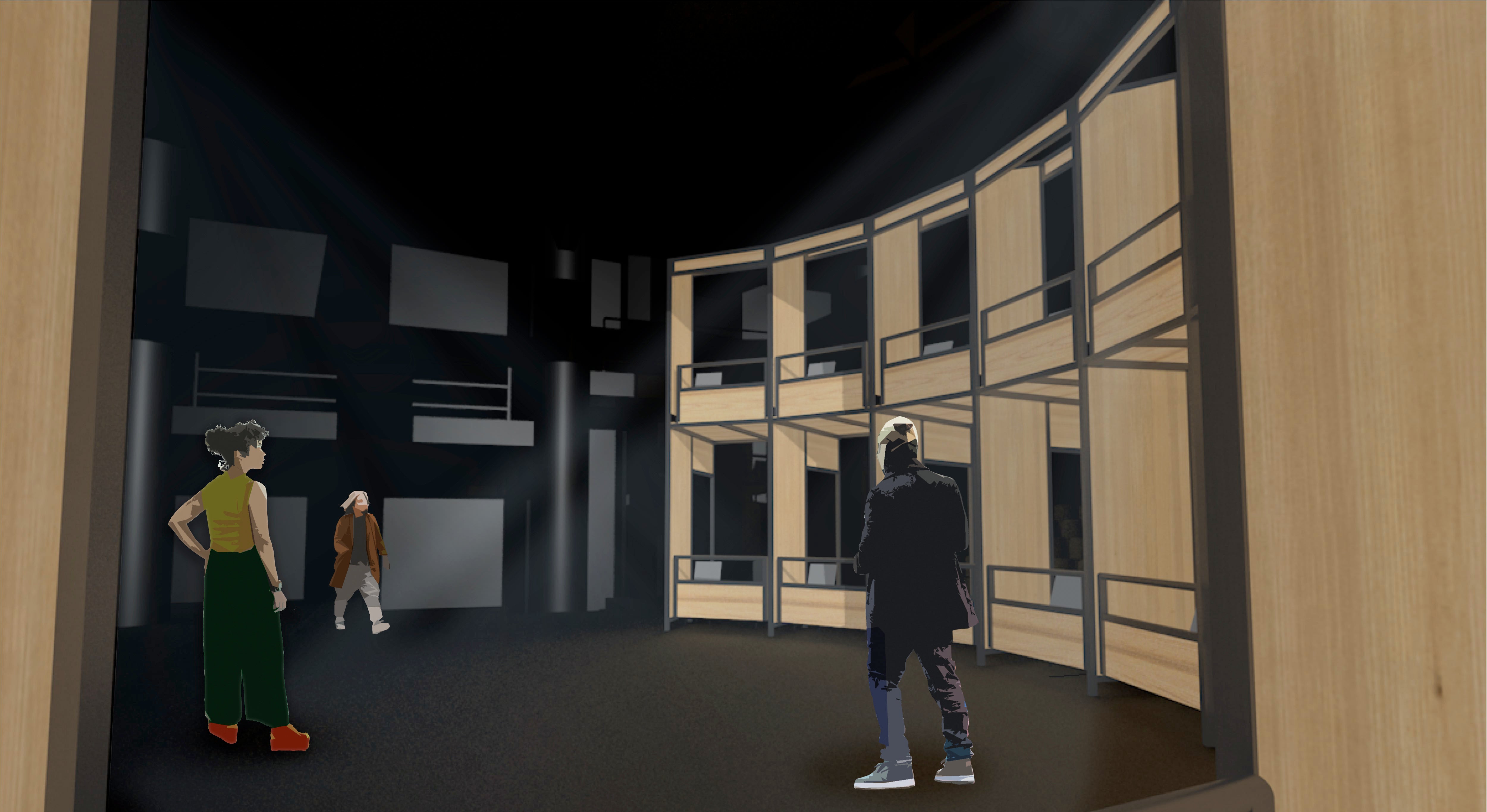
Modern patrons will not be able to reserve a private box for a season, however, when the Wilma builds its 20-box ring (each seating two people) on its stage, possibly in the fall. The seating scheme will be modular, able to change configuration depending on the needs of the play: it could be shaped like a ring, a crescent, an oval, a horseshoe, etc.
The unusual on-stage arrangement will be the only seating available when it is used. The normal 296 seats in the auditorium will not be available.
The problem the Wilma is trying to solve is gathering people together for a theatrical experience at a time when people need to keep distant from one another. Roping off rows and blocking off certain seats to force social distancing would not be satisfying, said Urnov.
To him, a fundamental part of the theatrical experience is watching live-action in communion with a live audience.
“It’s not so much the number of people, but proximity of the audience to each other,” said Urnov. “We keep thinking it’s a very communal experience, and we’re trying to find a way to stay close to each other while staying separated.”
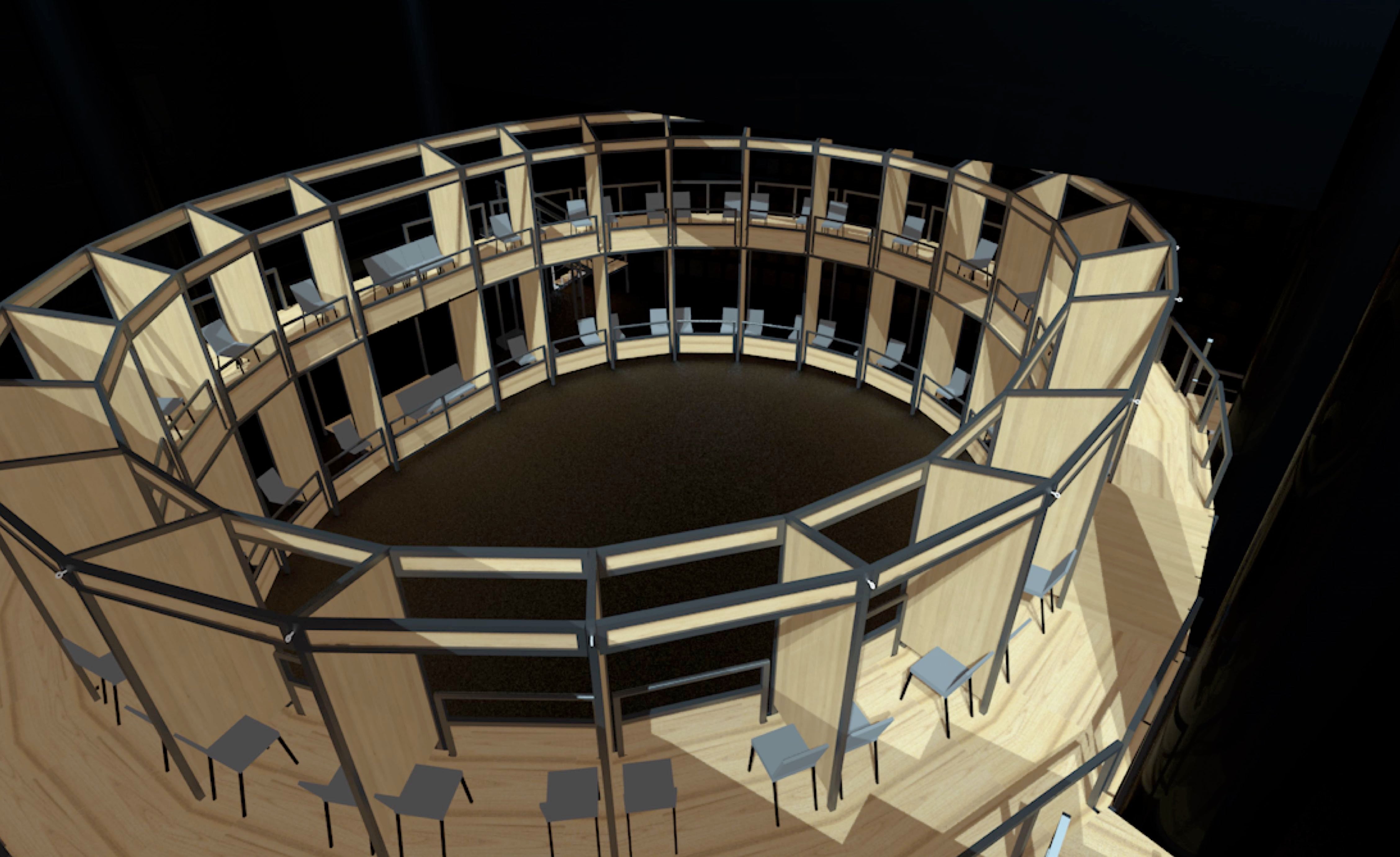
The tiered curve of boxes will enable the audience to see and hear one another as they watch the performance.
The Wilma plans to put the seating in place for performances starting in the fall, perhaps in conjunction with some kind of online streaming experience in order to increase the size of the audience and ticket sales. That is contingent, in part, on securing permission from the actors’ union.
Many of the details of the next performance season are unknown due to the fluidity of the pandemic. Although Philadelphia is entering the least-restrictive “green phase” of reopening, it’s possible by the fall or winter that the city may revert back to the social and economic restrictions of the “yellow” or “red” phases.
“Nobody is planning to do this if things are closed. We’re trying to figure out how to do this in the green zone,” said Urnov. “Even if we’re in the green zone, I think the fear factor will stay with us for a long time. Safety-wise, we need to be a step ahead of what’s permitted.”

Get daily updates from WHYY News!
WHYY is your source for fact-based, in-depth journalism and information. As a nonprofit organization, we rely on financial support from readers like you. Please give today.



![CoronavirusPandemic_1024x512[1]](https://whyy.org/wp-content/uploads/2020/03/CoronavirusPandemic_1024x5121-300x150.jpg)
